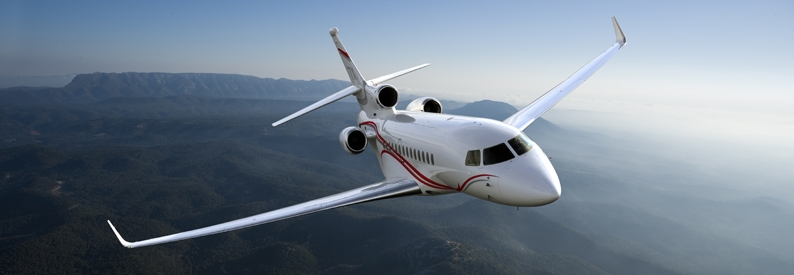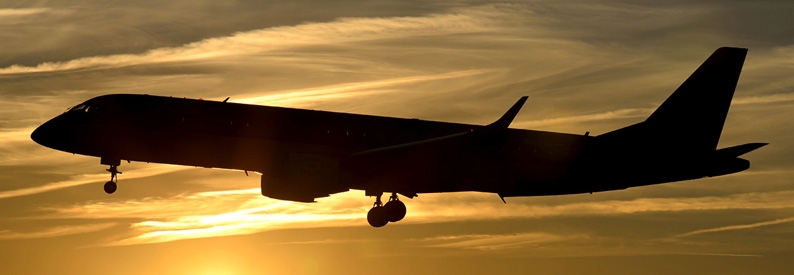SaxonAir Charter (SXN, Norwich International) is planning to almost double its fleet of managed light jets to 12 aircraft by the end of 2024, CEO Alex Durand told ch-aviation on the sidelines of the EBACE conference in Geneva, all the while it is looking for ways to address pilot and maintenance staff shortages.
The Norwich-based operator is focusing on the small types already in its fleet, namely the Cessna Aircraft Company CitationJet and the Learjets. A limited number of types is much more efficient from a regulatory point of view, and also allows the operator to reduce overheads. In a market with a "high breakeven" point, SaxonAir plans to use its existing capabilities to grow its fleet without adding to type complexity.
"When you get up to scale, it's a numbers game. There's no point sitting on the fence - I think if we could get to 12 aircraft by the end of the year it's going to be a coherent business, but we have to make sure we don't lose focus," Durand said. "In the past, we've been all over the place. Before Covid we had about nine different types, but only one aircraft of each. It was a really inefficient model".
The operator's fixed-wing fleet currently comprises one Learjet 40, one Learjet 45, two Learjet 45XRs, one Learjet 75, and one CitationJet 1. In the past, it used to operate more types across a wider spectrum of sizes, including very light and light jets such as Citation Mustangs, Hawker 400XPs, and Phenom 300s, as well as larger types such as the Challenger 605 and Gulfstream G550.
It will consider another type if it can add "two or three" units, Durand said. However, the UK market is relatively static in terms of new aircraft coming in, which means opportunities for such growth are limited. The small jets are attractive to new owners who discovered private aviation during the pandemic, as they are affordable to a much broader pool of potential customers.
"A Gulfstream makes the same money as all the small jets put together, and it's much simpler to operate one long-range flight rather than six short sectors. But we are a better business now than we were [when we had such fleet diversity]," he explained.
SaxonAir Charter sold its last owned aircraft during the pandemic and now only charters the fleet.
"We partner with another company that had an AOC. They were more interested in buying and selling aircraft while we got exhausted with the ownership side of things, but we have very good operations support. So effectively, we do the operation and control the AOC. We can do charter, but we just have a brokerage - sometimes we charter our fleet, but often not," Durand said.
SaxonAir Charter should invest more in business development by trying to find new owners to place aircraft on its AOC. Being based outside of the London metro area, it is "not seen as part of the mainstream business". It currently relies on partner companies to find new owners for its management services, he added.
Regulatory overheads
The fleet simplification has improved efficiency due to the overheads of managing multiple types which are often a heavy burden for a small business aviation operator to carry.
"The AOC oversight is a huge black hole of time. There's so much regulation - we're an airline but also a small business," he said.
With the regulators more used to working with large airlines planning their fleets years in advance, adding aircraft on short notice and without a large team remains challenging. The airline has all of its aircraft on the British G- register and did look at adding a Guernsey AOC in the past before Brexit. However, its focus is now on an EASA option.
After Brexit the demand structure changed, with more domestic flights and fewer operations to continental Europe - the airline closed its seasonal base at Cannes Mandelieu. However, in the medium term, it is planning to return to the EU by establishing a subsidiary AOC, most likely in Malta although Ireland is also being considered. Durand said it would be three to five years before it happens.
Despite the plans to establish an EASA AOC, SaxonAir Charter will not drop its UK certificate as there is still a very solid business charter market in the country.
Maintenance and staff challenges
Besides demand impact, Brexit also rendered fleet maintenance much more complicated as the UK no longer falls under European Union Aviation Safety Agency (EASA) oversight. With the Learjets being out of production, the number of maintenance providers is generally decreasing, but for UK-certified operators it is an even bigger problem.
"We were far more used to going to European MROs [before Brexit], which are not renewing their UK certifications," Durand explained.
The limited availability of maintenance slots makes SaxonAir "uncomfortable" and is an operational risk as it has to supervise maintenance much more closely to ensure quality. It also cannot offer its aircraft owners as wide a choice as it would like, with MRO providers being able to dictate terms. It is impossible for it to secure slots at short notice - fleet servicing requires planning in advance and managing flight hours accordingly. In addition to the limited number of certified providers, the active ones are struggling with workforce shortages.
These also affect SaxonAir Charter as it struggles to find pilots to support its planned growth. Durand pointed out that despite active apprenticeship and training programmes, many young pilots prefer to work for commercial airlines rather than business aviation firms. SaxonAir is currently looking at options to sponsor pilot recruitment and has already set up its own flight school. Durand believes there will be a sufficient pool of potential local staff once appropriate training options are available.
Helicopter business
Besides the fixed-wing corporate charters, SaxonAir Charter has sizeable helicopter operations targeting the offshore market. Its fleet currently comprises Eurocopter AS350s, four AW109s, and three AW119s.
While the operation of business jets, from the owners' perspective, is not aimed at profit but rather at reducing the costs of ownership, Durand emphasised that helicopter operations are managed differently. "We own our helicopters, and that is on a commercial return basis. It has to make money, and it does," he said.
The company is exploring leasing options to add more helicopters for a potential second base in Scotland, also driven by offshore business. "We're very close to someone who's asking us for a helicopter to put up there, we've just not had the capacity," he said.
SaxonAir Charter is considering the long-term sustainability of its helicopter business, given the potential for replacement with new technology. Durand conceded that the eVTOL market is ripe with "incredible innovation" but the commercial future of these projects remains a question mark.







